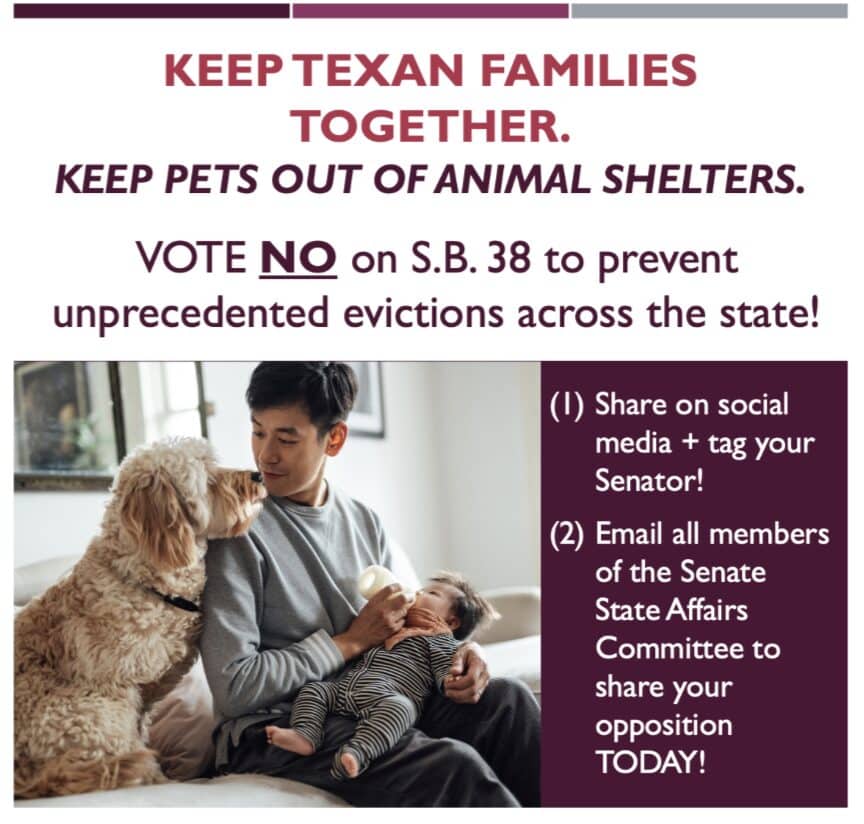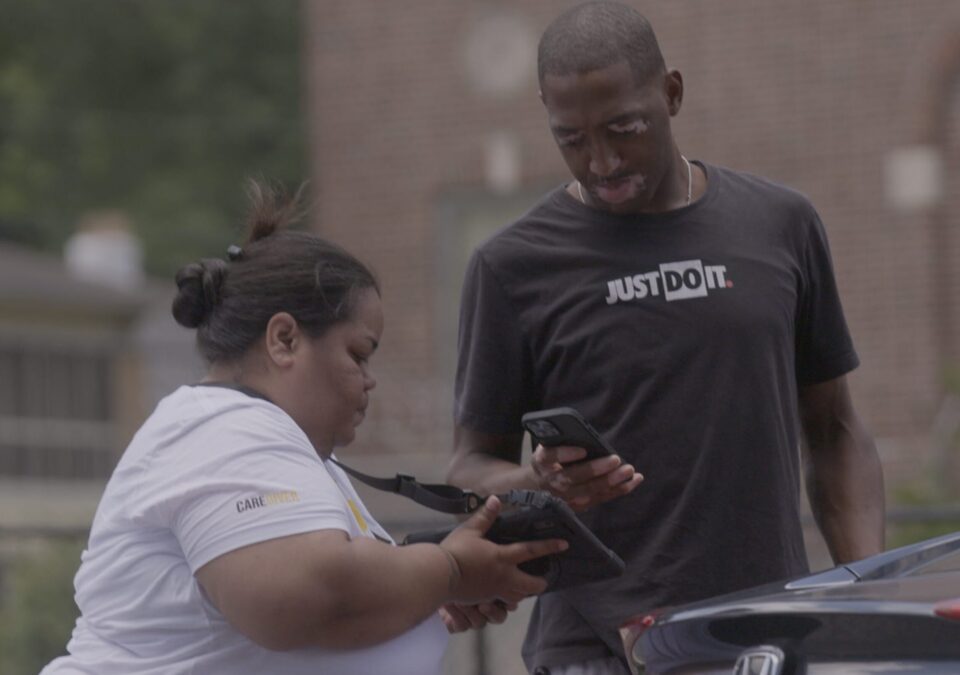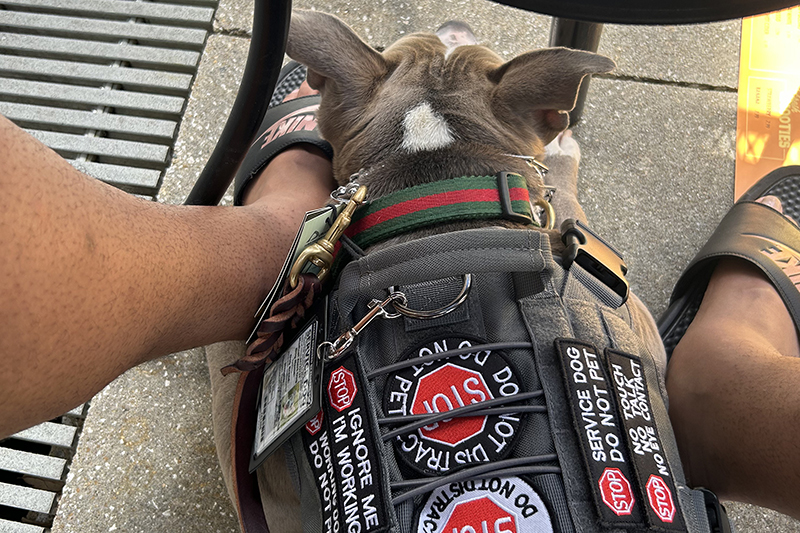
Do the Right Thing: Embrace differences in adoption programs
November 23, 2024
The Impact of a Conversation
September 5, 2025A Renewed Conversation about Pets
and Housing Policy
Expanding outside the very narrow topic of breed, weight, and size restrictions
By: Lauren Loney
In a span of just four years, the national animal welfare movement has largely embraced the intersectionality between housing security for tenants and companion animal well-being. Collectively, we seem to understand that we’re in the midst of a decades-long housing crisis. We understand that a majority of American rental households are living in housing they can’t afford and the impacts of unaffordable housing on every other facet of our lives. We understand that lack of access to pet-inclusive housing significantly contributes to pet overpopulation in animal shelters. We understand that more often than not, there is immense and lasting heartbreak felt by those who are forced to say goodbye to a pet they love because they can’t find a place to live together.
I’m proud to have worked on and supported dozens of pieces of state and local legislation across the country, championed by coalitions of national, state, and local organizations to increase access to pet-inclusive housing. I’ve been incredibly lucky to work alongside amazing advocates and researchers in the animal welfare space who are deeply committed to this effort. And fortunate to have joined the animal welfare nonprofit space from the tenants rights and poverty law’ world at a time when global circumstances (i.e. the COVID-19 pandemic) forced animal welfare as a broad movement to really lean in to exploring policy solutions for the housing crisis that pet-keeping tenants were facing at that time, and continue to face today.

What I’m most proud of, though, is the role that conversations about pets in rental housing have played in changing how we speak to – and about – people who are housing insecure, their relationships with their pets, and the challenges so many face to keep their pets healthy and housed. I know this work has, for example, sparked more thoughtful, kind, and less judgmental interactions between shelter intake staff and their community because now so many of us better understand that access to stable, safe, affordable, pet-inclusive housing in neighborhoods with grocery and pet stores, veterinary clinics, and green spaces for pet exercise is wildly out of reach for many in our communities. That one’s housing situation directly impacts their ability to access veterinary care, pet food, abide by local laws, or even to just be able to keep their pet inside. I know that our movement is often approaching people who are relinquishing their pets due to housing issues with different attitudes, more curiosity and compassion, and with more support systems in place to keep people and pets together. I’ve seen this incredible shift in the narrative in animal shelters, legislative offices, social media comment sections, and even in broader discourse, like this article published last year in the New York Times.
In examples too many to count, we’ve identified systemic racially and economically discriminatory housing as our common enemy, not the people who are most impacted by that system.
However, even knowing that our common enemy is this big systemic issue, our legislative advocacy for solutions to mitigate the consequences of this destructive system continues, by and large, to be about a very narrow topic: breed, weight, and size restrictions in housing policies. This is important work that shouldn’t be discounted, but I believe we’re ripe for a renewed conversation about the role that animal welfare can and, in my opinion should, play in the broader tenants’ rights and housing justice space. A renewed conversation about how we let go of the notion of “staying in our lane” or “mission creep” and, instead, fully embrace that those constructs will undoubtedly inhibit our collective goal to ensure that no person is separated from their pet because they can’t find affordable rental housing that accepts them; that no person should be unable to provide food, veterinary care, or other resources their pet may need because the cost of their housing leaves them with only about $300 in their bank accounts each month (notably, in 2017, the Federal Reserve reported that similarly situated households had $500 left each month). We cannot achieve these collective goals by eliminating breed, weight, and size restrictions in rental housing.
At the minimum, within the explicitly intersectional pets and housing space, we should actively coalesce around a strong agreement that nonrefundable pet fees are untenable. Multiple studies, dating back to the early 2000s have identified that caregivers who are relinquishing pets due to moving, other housing issues, or financial stress are very often low-income households. In a majority of states in the U.S., landlords can charge refundable pet deposits, nonrefundable up-front pet fees, or monthly pet rent – or any combination of those pet fees. While a small number of states disallow up-front, nonrefundable fees for rental housing, in general, only two state-level jurisdictions have passed laws regulating monthly pet rents and only one of those (Washington, D.C.) has created policy grounded in equity, where all renters can be charged a maximum of 1% of their monthly rent for pet rent. There is ample evidence that nonrefundable pet fees are a well-utilized avenue for increasing rental revenue and very little, if any, evidence exists suggesting that these nonrefundable fees are ever justified by the costs incurred by landlords for pet amenity or landscaping maintenance. To the contrary, multiple publications have identified monthly pet rents and nonrefundable fees as “junk fees.”
Outside of advocacy explicitly addressing pet-related issues, there are many avenues where animal welfare advocates could bring a strong and unique presence to the ongoing work in which racial justice and affordable housing advocates are currently engaged. Here are a couple of broad housing justice policy issues to consider:
- Oppose legislation that makes it easier to evict tenants because our research suggests that pet relinquishment due to “loss of home” has been on the rise since 2019. For example, animal welfare organizations are working alongside housing justice organizations in Texas to actively oppose H.B. 32, which would eviscerate the already “meager” tenant protections in the state.
- Knowing that “moving” is the most-cited reason for relinquishment under the umbrella of housing issues, support legislation like Colorado HB 23-1098, which enacted a “just cause eviction” to protect tenants from eviction or nonrenewal of a lease without wrongdoing by the tenant. Here’s a list of states that have introduced similar legislation in 2025!
- Oppose legislation that weakens eviction laws. For example, in the Texas 2025 legislative session, animal welfare advocates are supporting the tenants rights movement by opposing SB 38/HB 32, which would make devastating changes to Texas’ already landlord-friendly eviction laws and result in increased pet relinquishments by tenants. Check out Texas Housers testimony here and an example of sharegraphic content that can be utilized to help build grassroots support in this intersectional space.

- At a time when compliance with federal fair housing protections are more at risk with an estimated 40%-50% cut of staffing at the Department of Housing and Urban Development (HUD), we can support state-level legislation creating an Office of Fair Housing and creating more opportunities for increased mobility for low-income tenants to move into higher-opportunity neighborhoods, like this Massachusetts bill from 2023. You can read my letter of support for this legislation here!
There are so many opportunities to more deeply engage in local, state, or federal level housing justice work. I would understand if you’re worried about how to get started! My best advice is to reach out and build a relationship with your local or state housing advocacy groups. Learn about their legislative priorities and ask how you can get involved. For an easy starting point, check out this searchable database of state and local tenant protections hosted by the National Low Income Housing Coalition (NLIHC) and their list of State and Tribal Partners to find an advocacy group located in your state! To help start the conversation, check out this fact sheet co-created with animal welfare and NLIHC’s Opportunity Starts at Home campaign explaining the relationship between animal welfare and tenants’ rights!
If you are interested in partnering with CARE to care on research, programming, or policies related to pets in housing, please join CARE’s ChangeMaker Circle for future updates: https://mailchi.mp/careawo.org/changemakerscircle
Lauren Loney BIO






